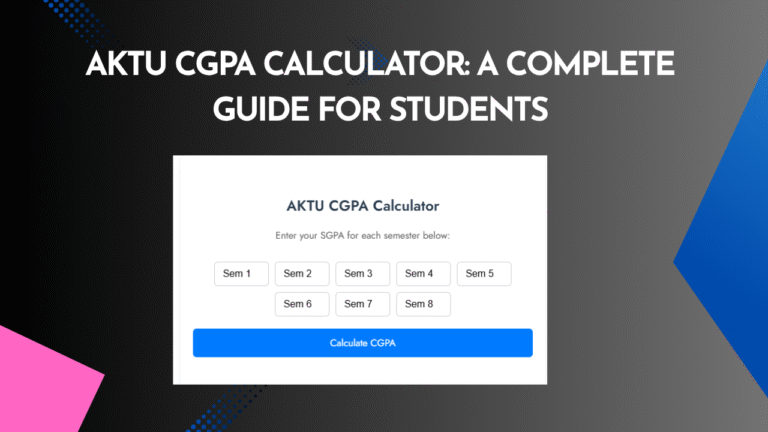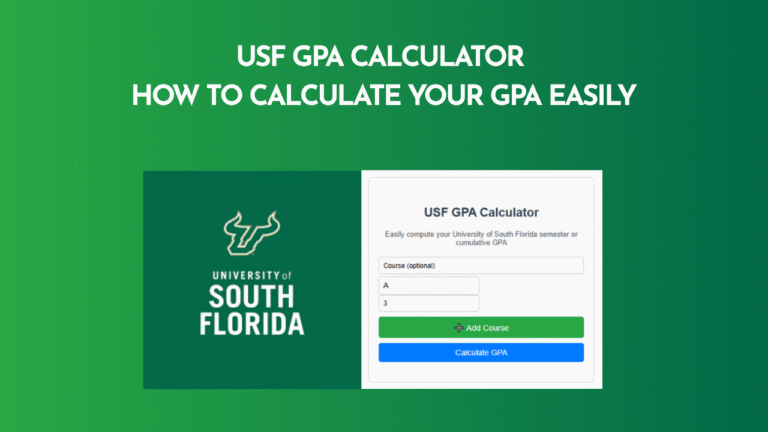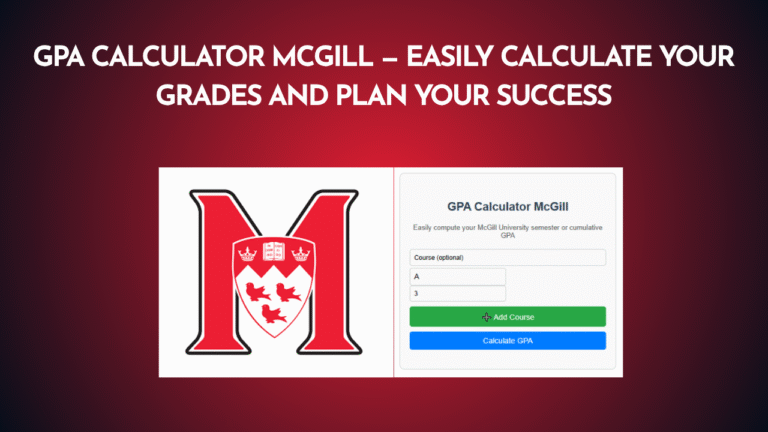Cumulative GPA Calculator | Easily Convert GPA
Cumulative GPA Calculator : If you’re a student, you’ve probably heard the term GPA more than once. But do you really know what your cumulative GPA is and how it’s calculated? Whether you’re in high school, college, or university, understanding your GPA helps you stay on track with your academic goals.
In this post, we’ll explain what a cumulative GPA is, why it’s important, and how you can calculate it easily using a Cumulative GPA Calculator. No complex math. Just a simple explanation you can follow.
Cumulative GPA Calculator:
Cumulative GPA Calculator
What is a Cumulative GPA?
A cumulative GPA is your overall Grade Point Average across all semesters or grading periods. It combines your grades from different courses and calculates an average based on the number of credits each course carries.
Think of it like this: instead of just looking at your grades from one semester, cumulative GPA looks at all your grades so far. It gives a big picture of your academic performance.
For example, if you completed three semesters with different GPAs, your cumulative GPA will reflect all three and not just the most recent one.
Why Is Cumulative GPA Important?
Cumulative GPA is more than just a number. It is often used for:
- College admissions or transfers
- Scholarship eligibility
- Internship or job applications
- Graduation honors
- Academic probation warnings
When someone asks for your GPA, they usually mean your cumulative GPA. That’s why keeping track of it is important throughout your academic journey.
Also Check :
How to Calculate Your Cumulative GPA
The formula is simple:
Cumulative GPA = Total Grade Points Earned ÷ Total Credit Hours Attempted
Here’s a step-by-step breakdown:
- List your courses, the grades you received, and the number of credits each course is worth.
- Convert grades into grade points. (e.g., A = 4.0, B = 3.0, etc.)
- Multiply the grade point by the course credit hours to get the total grade points for each course.
- Add all grade points together.
- Add all credit hours together.
- Divide total grade points by total credit hours.
Let’s say:
- Semester 1: 4 courses, 3 credits each, GPA 3.5
- Semester 2: 4 courses, 3 credits each, GPA 3.0
Total Grade Points = (3.5 × 12) + (3.0 × 12) = 42 + 36 = 78
Total Credits = 24
Cumulative GPA = 78 ÷ 24 = 3.25
Use a Cumulative GPA Calculator:
While you can calculate it manually, it’s much easier to use an online Cumulative GPA Calculator. All you need to do is:
- Enter your past GPA and credits
- Add your current semester grades and credits
- Click calculate
The calculator will instantly show your updated GPA without the risk of mistakes. It saves time and helps you try different grade scenarios to see how future grades could impact your GPA.
Many calculators also support multiple semesters and allow you to update your data as new grades come in.
Converting GPA to Letter Grades:
Here’s a simple chart many colleges follow:
| GPA | Letter Grade |
|---|---|
| 4.0 | A |
| 3.7 – 3.9 | A- |
| 3.3 – 3.6 | B+ |
| 3.0 – 3.2 | B |
| 2.7 – 2.9 | B- |
| 2.3 – 2.6 | C+ |
| 2.0 – 2.2 | C |
Note that different institutions may use slightly different scales. Always check with your school.
Why You Should Keep Track of Your Cumulative GPA:
Here are a few reasons why you should regularly check your GPA:
- Set academic goals: Know what GPA you need for honors or scholarships.
- Identify problem areas: If your GPA is dropping, it’s a sign to get help.
- Prepare for the future: Whether you’re planning for graduate school or job applications, your GPA matters.
- Stay motivated: Seeing improvements in your GPA can keep you focused.
Final Thoughts:
Your cumulative GPA is a key part of your academic life. It tells you how you’re doing overall and helps others (like universities or employers) understand your performance too.You don’t need to be a math expert to track your GPA. Use a good Cumulative GPA Calculator, keep your grades organized, and review your progress at the end of each semester. This small habit can make a big difference over time.Stay focused, aim high, and never be afraid to ask for help if you need it.






